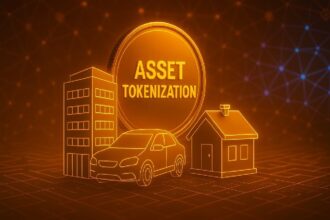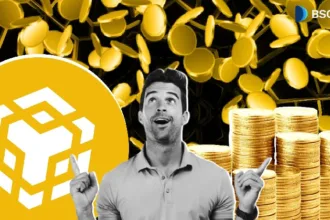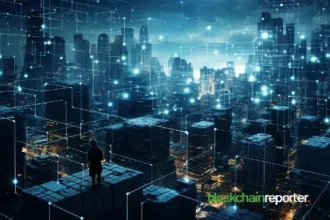Blockchain experts say that green energy has a lot of interest from investors, but participation is largely limited to large institutional players due to challenges such as prepaid costs. Experts believe that tokenization can democratize investment in sustainable projects.
Tokenization: Democratization of green energy investment
The global push for green energy and energy independence has increased investor interest, but continues to restrict participation primarily in large institutional players. Mete Al, co-founder of ICB Labs, argues that this dynamic is about to change dramatically, and tokenization has emerged as the key to democratizing investment in sustainable projects.
“There’s a big interest in green energy, but most are limited to big players,” explains Al. He points to the inherent challenges of large-scale green projects. It is the need for substantial upfront capital, long development timelines, and critical issues of trust, especially when the project is in remote or unfamiliar areas. “It keeps out the average person.”
This is where tokenization, the process of converting ownership of tangible assets into splittable digital tokens on the blockchain, becomes a game-changer. AL, a blockchain and cryptocurrency expert, highlights the potential for change. “By splitting solar farm ownership into tokens, anyone can invest, earn passive income and support sustainability.
This participatory ownership dramatically reduces barriers to entry, allowing individuals to participate in large-scale renewable energy projects with relatively little investment. The paradigm shifts from exclusive, high-capital ventures to inclusive and accessible investment opportunities, leading a wider capital pool into the green energy sector.
Address the remaining hurdles
Tokenization offers a powerful solution, but Al admits that the path is not completely unaffected. “Of course, there are still challenges: regulations, stable pricing, technology restrictions and, above all, transparency,” he points out.
However, he argues that blockchain technology provides an important tool to overcome these. The inherent transparency and immutability of blockchain records are fundamental, but Al emphasizes that true effectiveness comes from strategic implementation. “What’s really working is a smart contract that links revenue to actual output, dashboards to track everything, a fair reward system.”
This vision goes beyond just digital representation. It is to create a verifiable, automated, and equitable ecosystem for green energy investments. Smart contracts allow passive revenue to be automatically distributed to token holders based on the actual energy generated by solar farms, promoting trust and ensuring direct alignment of incentives. Transparent dashboards provide real-time performance data to help investors clearly recognize the environmental and economic impacts.
Mete Al reveals that his company, ICB Labs, is not only observing this trend, but is actively building solutions. “That’s exactly how we build the 2026 solar tokenization project,” he says, demonstrating a concrete commitment to bringing this innovative model to life.
A direct link between accessibility, transparency, and investment and real-world green energy output – by focusing on these core principles that promise to unlock a new era of sustainable finance. This has the potential to accelerate the deployment of green energy installations around the world, bringing us closer to a future of energy independence and environmental sustainability with a truly democratic investment environment.
Maximizing Opportunities: Beyond Hype
Meanwhile, the rapidly growing sector of green energy tokenization is expected to present a new frontier that is appealing to investors and the crypto community. However, to maximize that potential, we need to go beyond speculative trends and focus on utilities, transparency and real-world impacts. The co-founders of ICB Labs offer important advice on how to effectively engage in this rapidly growing space.
First, Al advocates for a change in entrepreneurial thinking, urging innovators to abandon what he critically calls “short-term thinking” in favor of being more resilient and cultivating the nature of hyperopia. “Projects like solar tokenization aren’t about meme coins, they’re about long-term value and true impact.”
This perspective is essential. Unlike speculative assets driven by the fleeting internet culture, green energy tokens draw value from solar farms or wind projects, such as assets that generate concrete revenue. In fact, participating investors, coupled with environmental benefits, are purchasing a share of real-world energy production and associated financial profits. This requires a patient value-driven investment approach, similar to traditional infrastructure investments, but adds the benefits of blockchain efficiency and accessibility.
In the case of the crypto community, AL emphasizes the power of active participation. “Participate. Learn about the projects you support. Join governance, ask questions, vote for decisions.” He emphasizes that the strength and stability of these tokenized ecosystems are directly proportional to community engagement.
Decentralized governance, often driven by Token Holdings, allows investors and community members to speak directly about the development of projects, operational decisions and future directions. Asking important questions and participating in the voting mechanism allows community members to ensure accountability, reduce risk and maneuver the project towards stated goals. This collective surveillance promotes a more resilient and reliable environment for all stakeholders.
Finally, Al is urging investors and community members to “back a serious platform for utilities and transparency.” He highlights an important philosophical point. “As just as important as clean energy, blockchain should be a tool, not a focus.”
The key role of regulators: Balance between innovation and risk
However, as tokenization of solar and other green energy projects gain momentum, key issues become apparent. How can regulators develop this innovative sector without exposing them to the inherent risks of distributed technology? Meteal emphasizes the need for sensitive tightrope walking regulators to walk to ensure that this emerging market thrives responsibly.
“Regulators do strict work. They kill innovation, they kill innovation, and loose, bad actors take over,” AI says. This captures the central dilemma facing policymakers around the world as they tackle the rapid evolution of blockchain-based finance. He claims the solution is lying to achieve a “smart balance.”
According to AL, achieving this balance requires active collaboration between regulators and blockchain companies driving this innovation. This partnership should open up a way to create an environment that will help you test new ideas, particularly through regulatory sandboxes. These controlled environments allow new financial products and technologies to be developed and tested under regulatory oversight, driving innovation while minimizing risk.
Looking further, Al advocates a unified approach on an international scale. “Ideally, I would like to look at global standards, which are a shared framework for how tokenized green energy assets are classified and regulated, like stocks and real estate funds,” he argues.
This call for global harmony is driven by the very nature of the challenges being addressed. “Climate change is global and there should be tools to combat it as well,” Al concludes.






